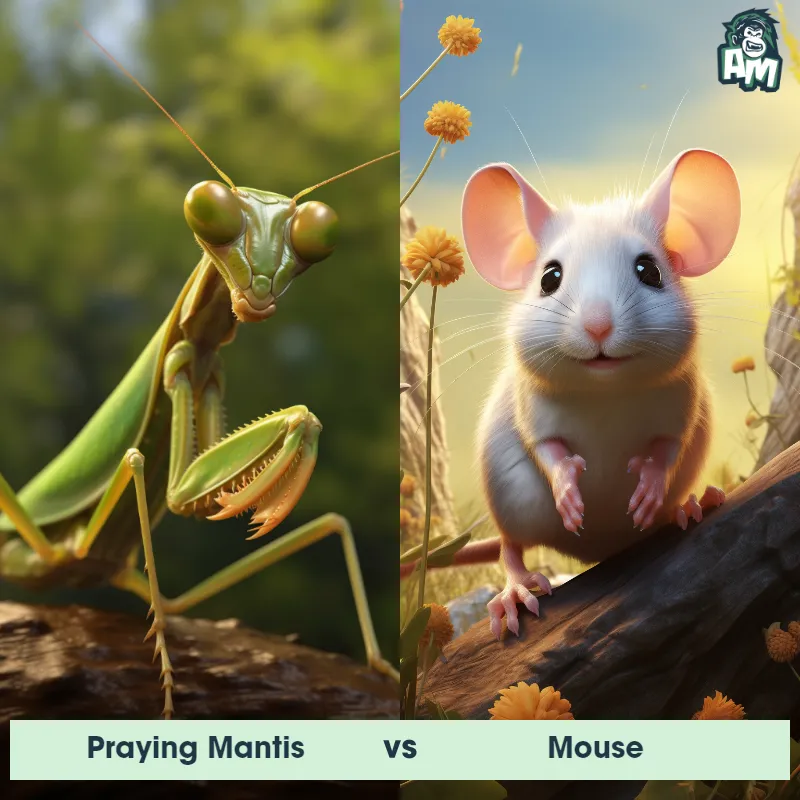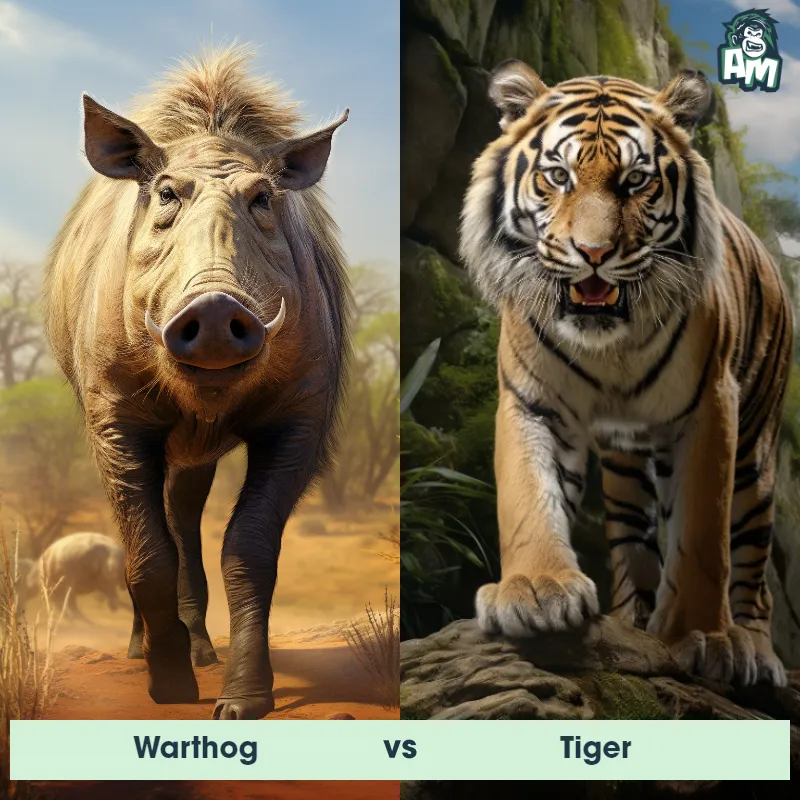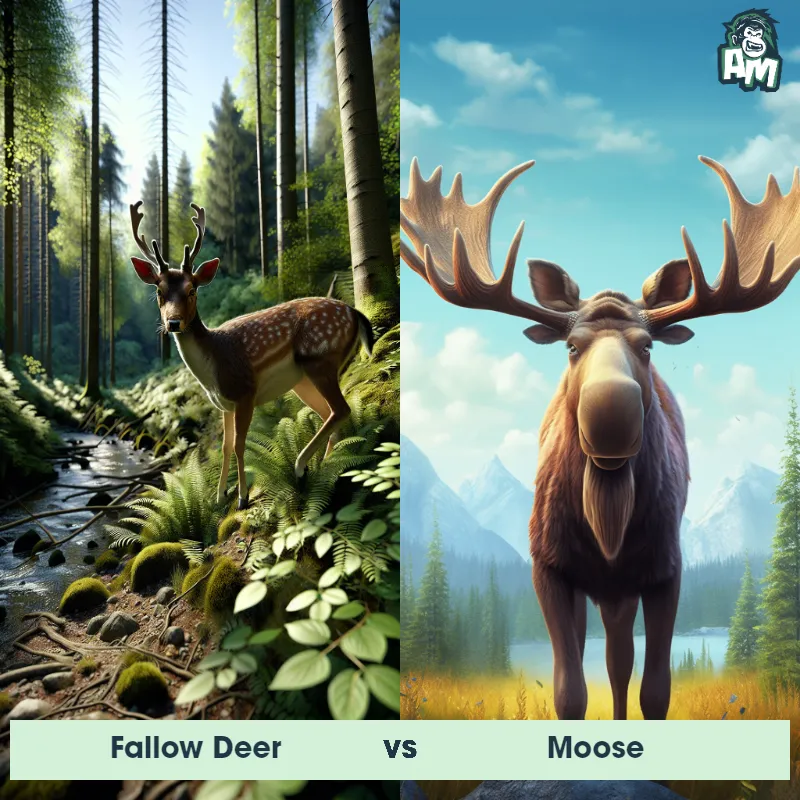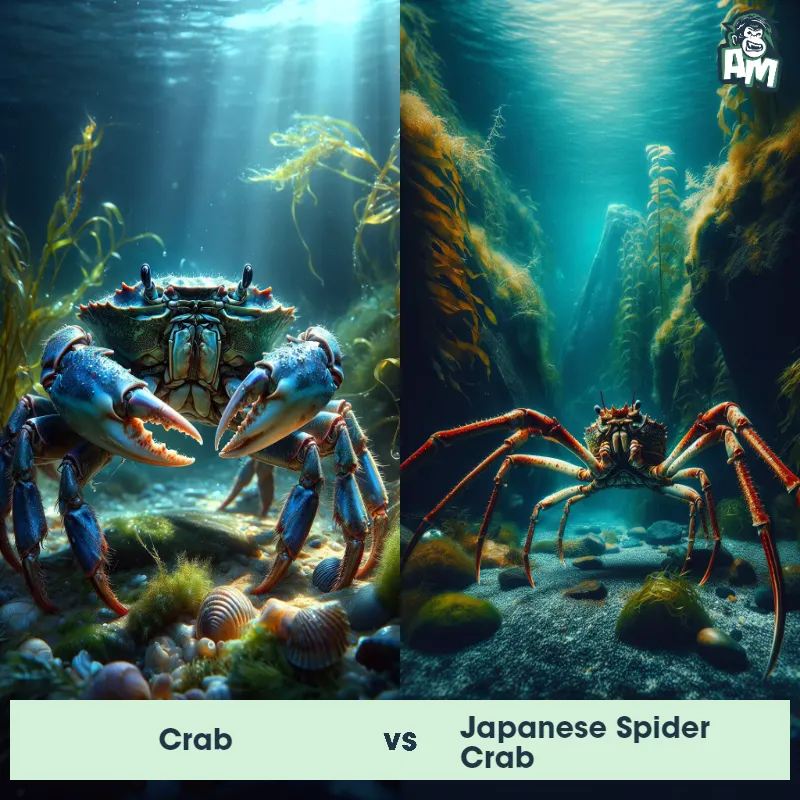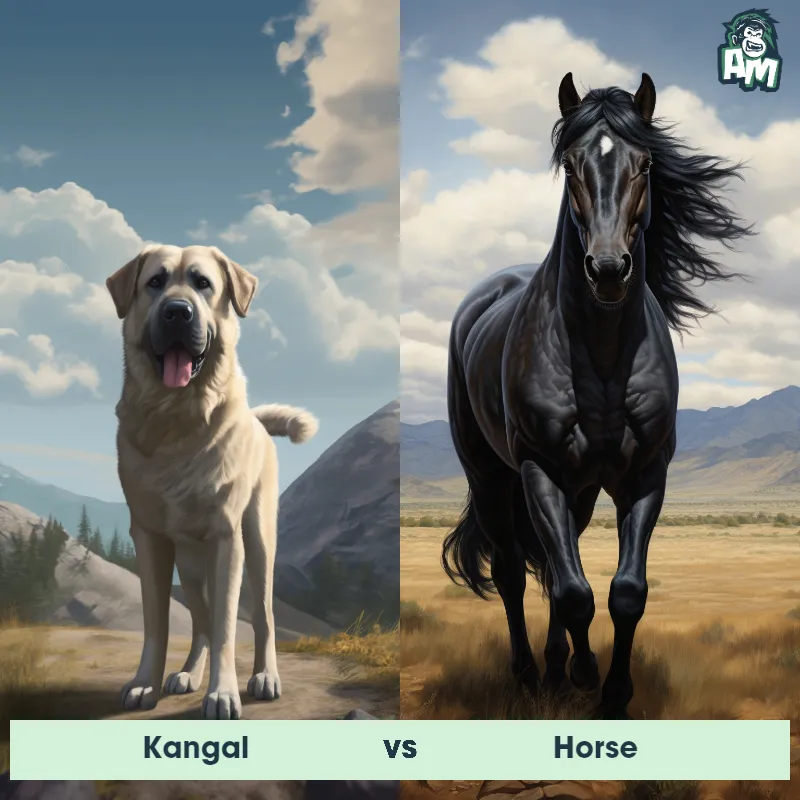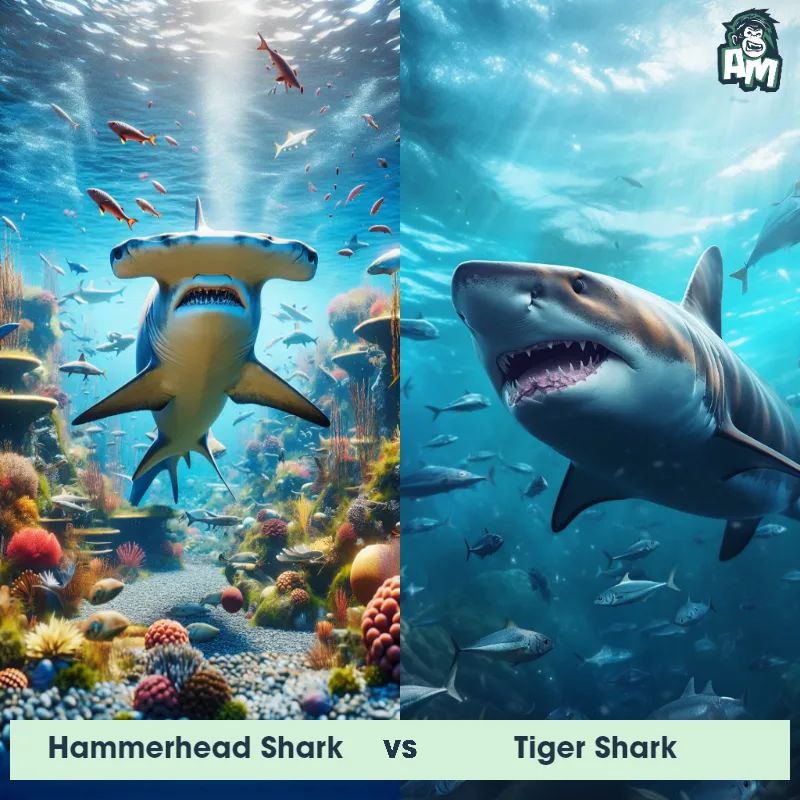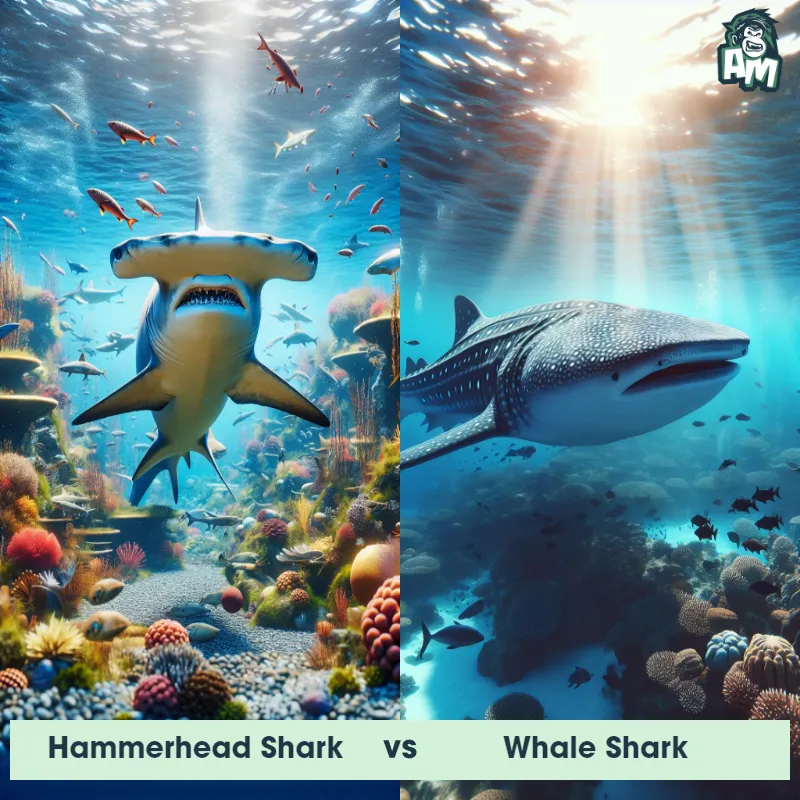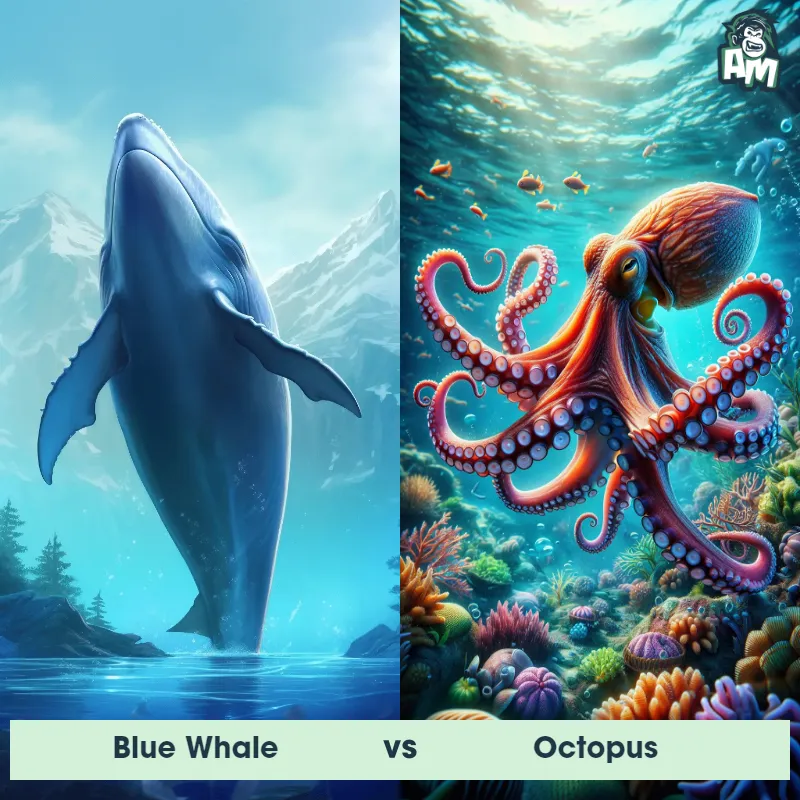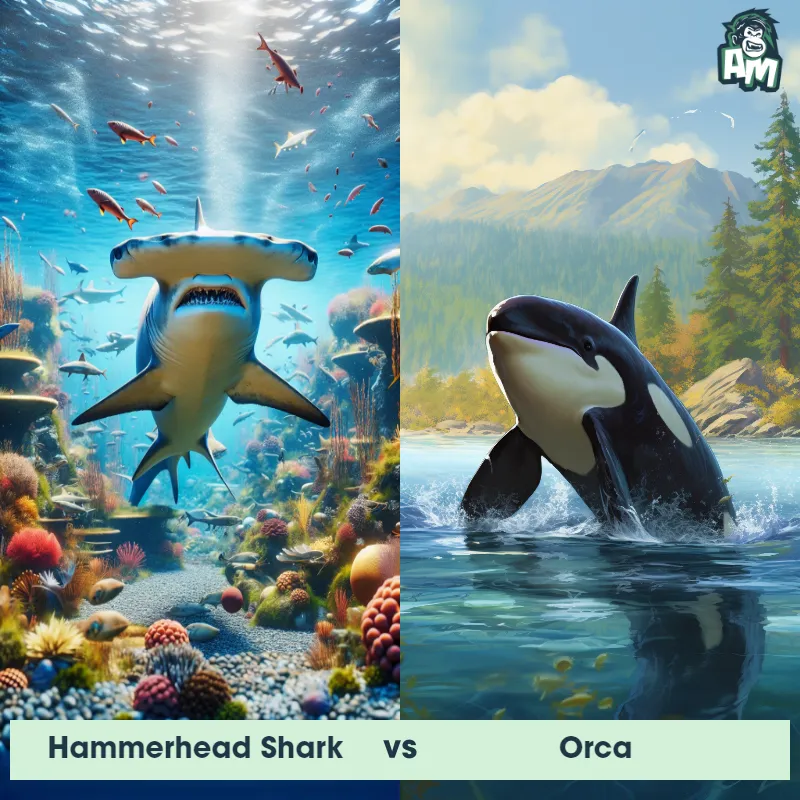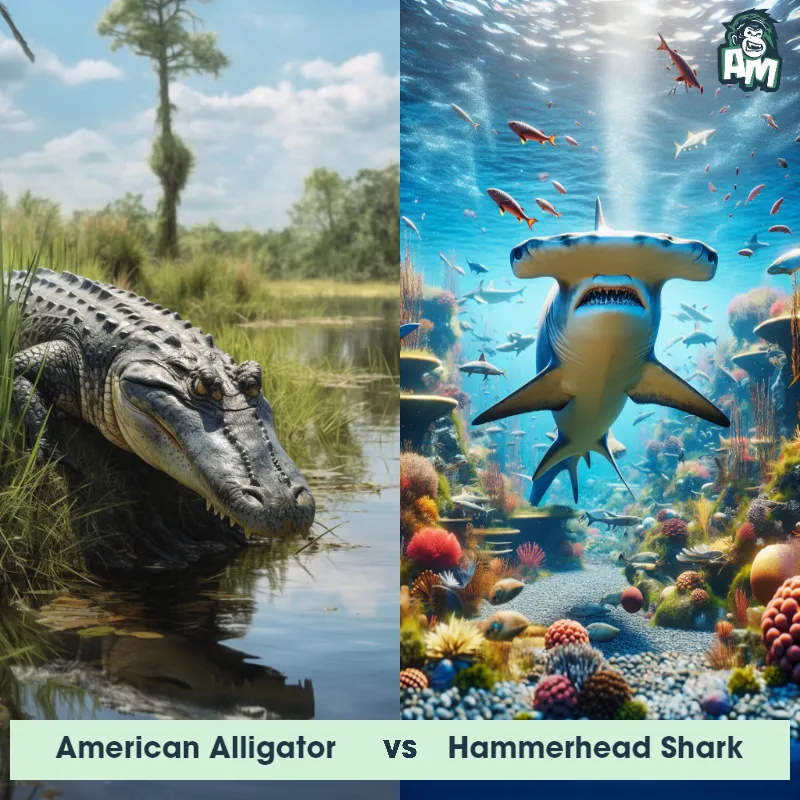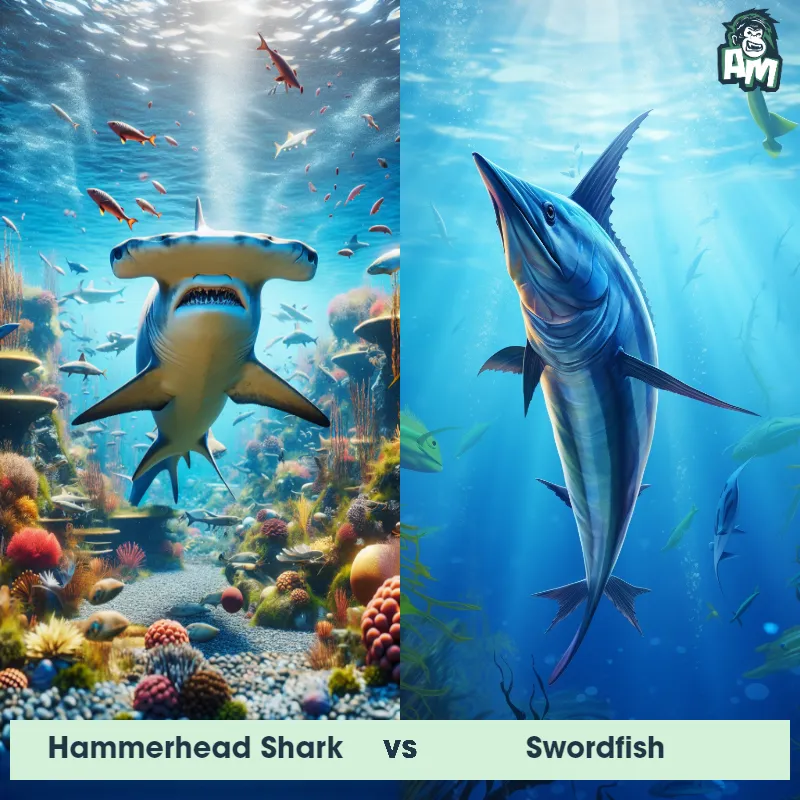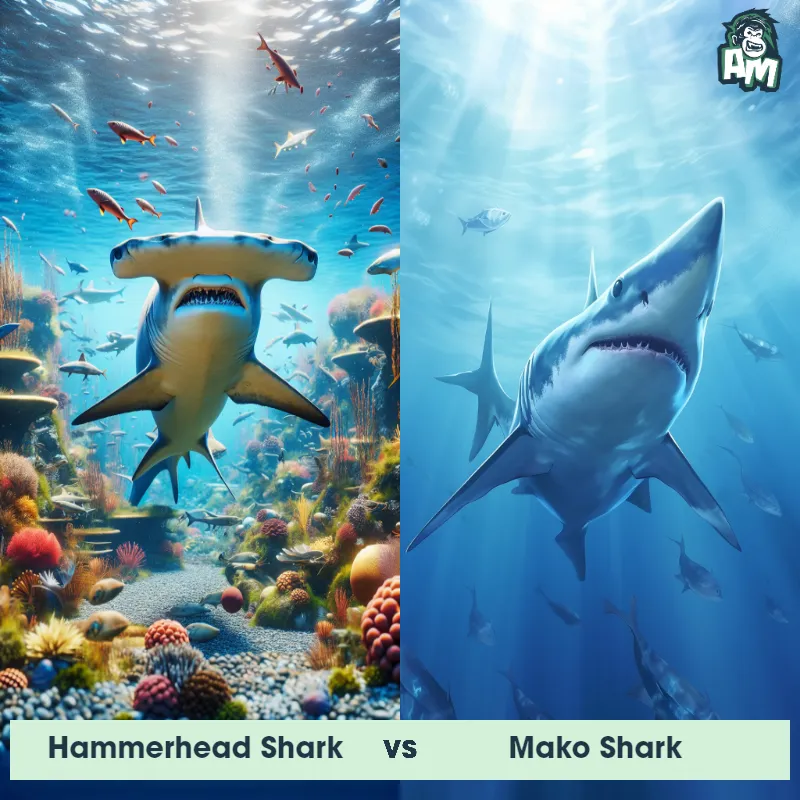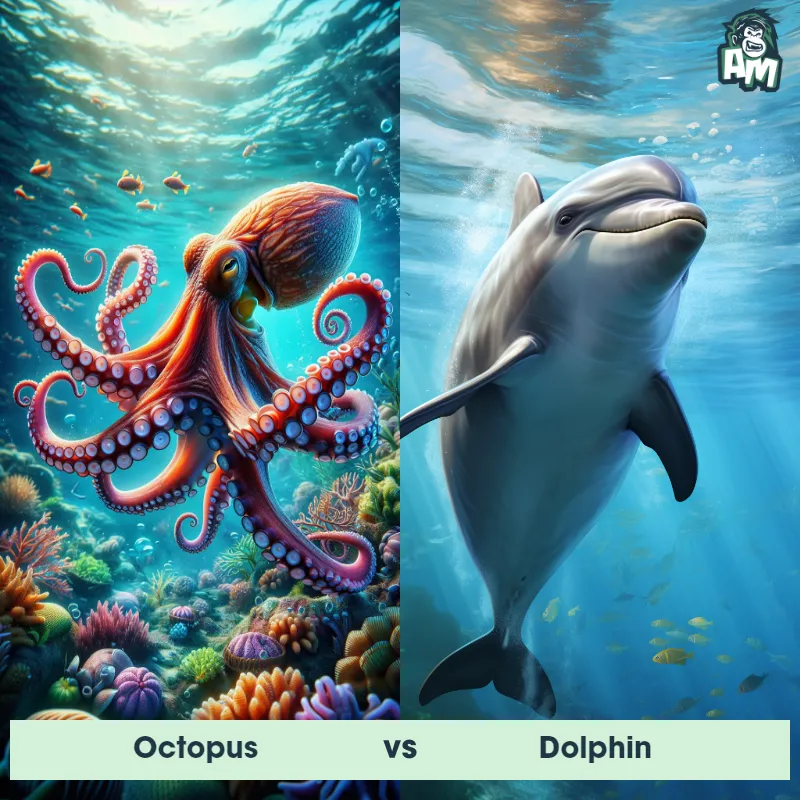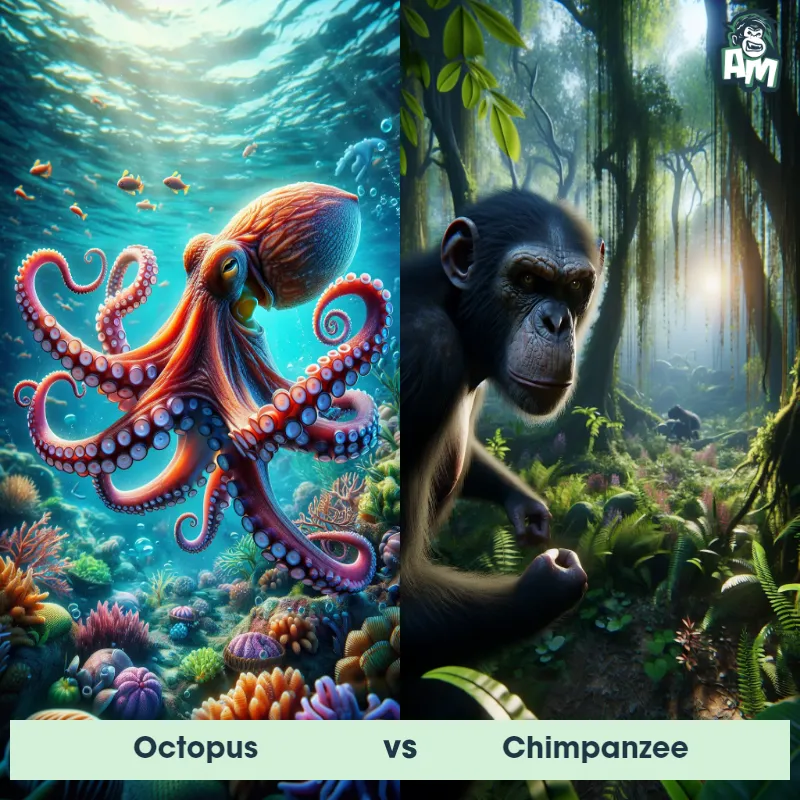Hammerhead Shark vs OctopusSee Who Wins
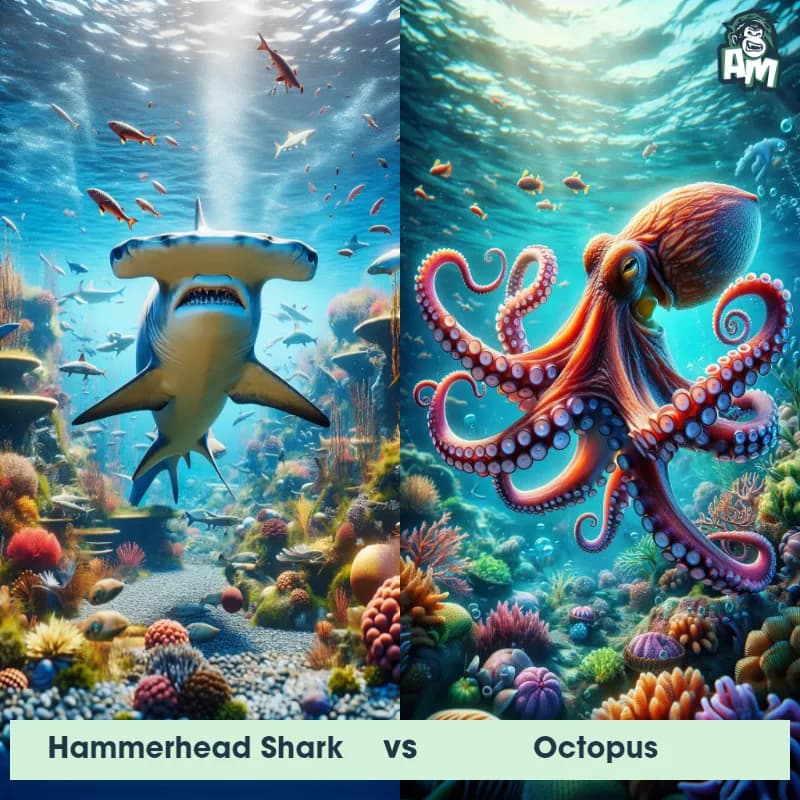
Ladies and gentlemen, welcome to the electrifying world of underwater combat! Tonight, we witness an enthralling battle between two of the ocean's most formidable predators. In the blue corner, we have the mesmerizing Hammerhead Shark, known for its sharp senses and powerful jaw. And in the red corner, we have the captivating Octopus, renowned for its intelligence and mighty tentacles. Brace yourselves, as these mighty creatures prepare to clash in a contest of strength, strategy, and survival!
Contender 1: Hammerhead Shark
The Hammerhead Shark, also known as the Great Hammerhead, is a large shark species that can grow up to 20 feet in length and weigh up to 1,000 pounds. Its most distinctive feature is its wide, flattened head that resembles a hammer, which is used to detect prey buried in the sand. They have a gray-brown coloration and a streamlined body that allows them to swim quickly through the water. Hammerhead Sharks are found in warm waters around the world and are known to be solitary hunters.
Fun Fact: Hammerhead Sharks have a unique hunting strategy where they use their wide head to pin down stingrays and other prey against the ocean floor, making it easier to eat them.
Contender 2: Octopus
The octopus is a fascinating marine creature known for its rounded body, large eyes, and eight long arms lined with suckers. They belong to the class of mollusks known as cephalopods and are widely regarded as the most intelligent invertebrates. The octopus's skin color and texture can change dramatically, a trait used for both communication and camouflage. Octopuses are carnivorous, feeding mainly on crabs, shrimp, and other small sea creatures.
Fun Fact: Octopuses have three hearts; two pump blood to the gills, while the third pumps it to the rest of the body.
Matchup Stats
| Hammerhead Shark | Octopus | |
|---|---|---|
| Size | Up to 20 feet (6.1 meters) | 6–24 inches (15–60 cm) in body length; arms up to 13 feet (4 m) span |
| Weight | Up to 1,000 pounds (453.6 kilograms) | 0.05 to 600 pounds (0.02–272 kilograms) |
| Speed | Speed: 25 mph (40 km/hr) | 25mph (40km/h) |
| Key Strength | Powerful bite and strong swimming ability | High intelligence, ability to change skin color and texture for camouflage, and use of ink for defense |
| Biggest Weakness | Vulnerable to attacks on the sides of its body | Soft body with no skeletal structure, making them vulnerable to larger predators |
Current Votes
Hammerhead Shark vs Octopus
See Who Wins
View More Matches
Looking For More?
Similar Matches
Scientific Stats
| Hammerhead Shark | Octopus | |
|---|---|---|
| Scientific Name | Sphyrnidae | Octopoda |
| Family | Sphyrna | Octopodidae |
| Habitat | Saltwater | Marine environments, from shallow coastal waters to deep-sea trenches |
| Geography | Warm waters around the world | Worldwide, in all oceans |
| Diet | Stingrays, fish, squid, octopus, crustaceans | Carnivorous, feeding mainly on crabs, shrimp, and other small sea creatures |
| Lifespan | 20 years - 30 years | 1 year - 5 years |
Key Differences between Hammerhead Shark and Octopus
- Coloration: While both species display variations in color, the Hammerhead Shark typically has a gray or greenish-gray body with light-colored undersides, blending with their surroundings. Conversely, the Octopus is highly adaptable and can change color and texture to camouflage with its environment, making it difficult to identify a consistent coloration pattern.
- Appendages: Another distinguishable difference is the number and type of appendages. The Hammerhead Shark has pectoral fins that are elongated and resemble hammers, giving it its iconic name, whereas the Octopus possesses multiple tentacles or arms, usually eight, with suction cups along their length.
- Skin Texture: The Hammerhead Shark's skin appears rough and grainy, with dermal denticles covering their body, providing them protection and reducing drag in the water. In contrast, the Octopus has soft and smooth skin, allowing it to easily squeeze through crevices and camouflage more effectively.
- Body Size: Hammerhead Sharks are significantly larger and can reach lengths of up to 20 feet, making them visually substantial and formidable predators. Comparatively, Octopuses are generally much smaller, with most species measuring between 12 to 36 inches in length, presenting a stark contrast in their overall size.
- Eye Placement: Hammerhead Sharks have uniquely positioned eyes, located on each end of their hammer-like head, providing them with a wider visual field and an increased ability to detect prey. On the other hand, Octopuses have prominent eyes placed closer together, along with an excellent ability to see colors and shapes.
- Shape: The key visual difference between the Hammerhead Shark and Octopus lies in their distinct body shapes. The Hammerhead Shark features a hammer-shaped head, also known as a cephalofoil, which is flattened and extends sideways, while the Octopus has a soft-bodied, round head with no distinct shape.



